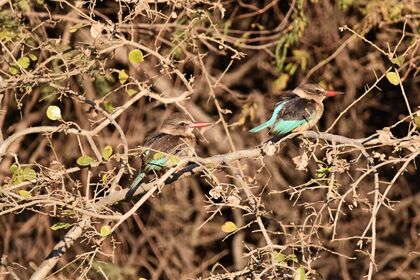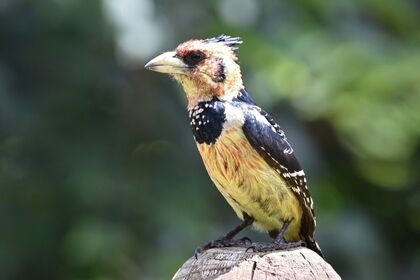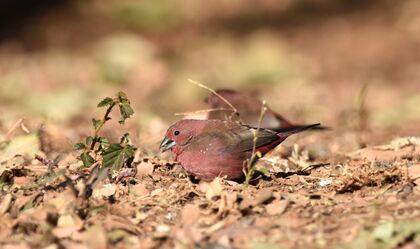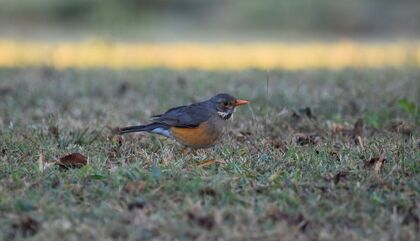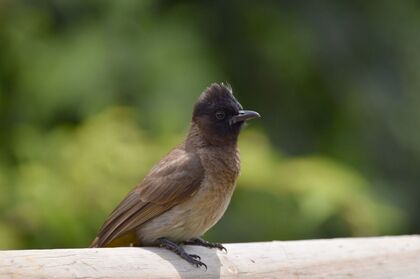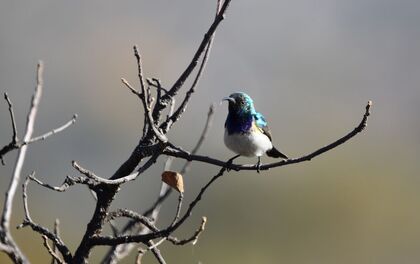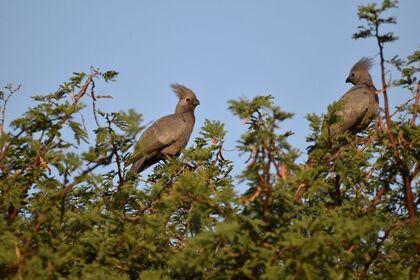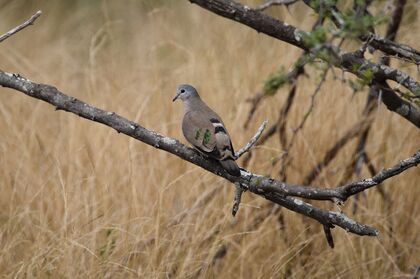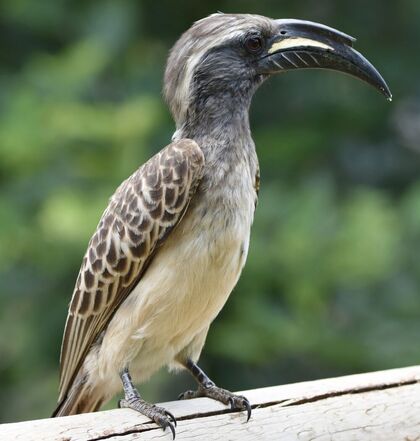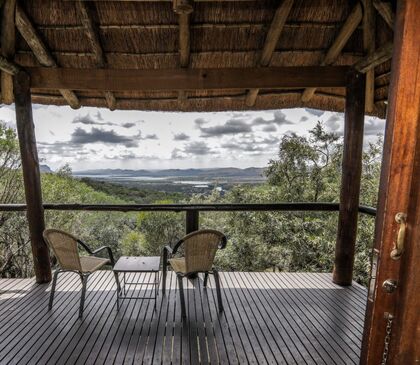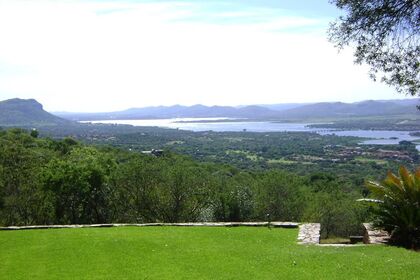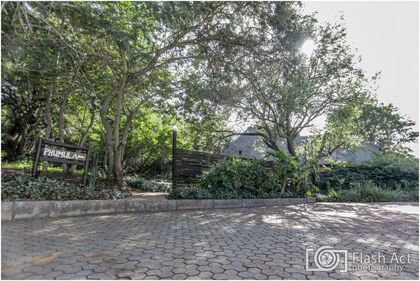
Birding in Magaliesberg - Leopard Lodge
The area around the Magaliesberg mountains and Hartebeespoort dam have become a first-choice getaway for thousands of weary city-slickers looking for an escape from the heavily urbanised metropolitan areas around Johannesburg and Pretoria. Only an hour long drive from these cities make it easily accesible for a weekend- or even day-trip. Leave the pollution and chaos behind as you explore this unique part of the country.
The Magaliesberg mountains that surround the area make for a remarkable natural experience. The rocks on the mountains are part of an ancient sea that was raised due to geological activity millions of years ago. These mountains have formed a natural border that leads to differences in ecology between the highveld grasslands in the south and the savanna biome in the north. As such, the Magaliesberg Biosphere serves as the interface between these areas and the fauna and flora from both of these biomes can be found in the area.
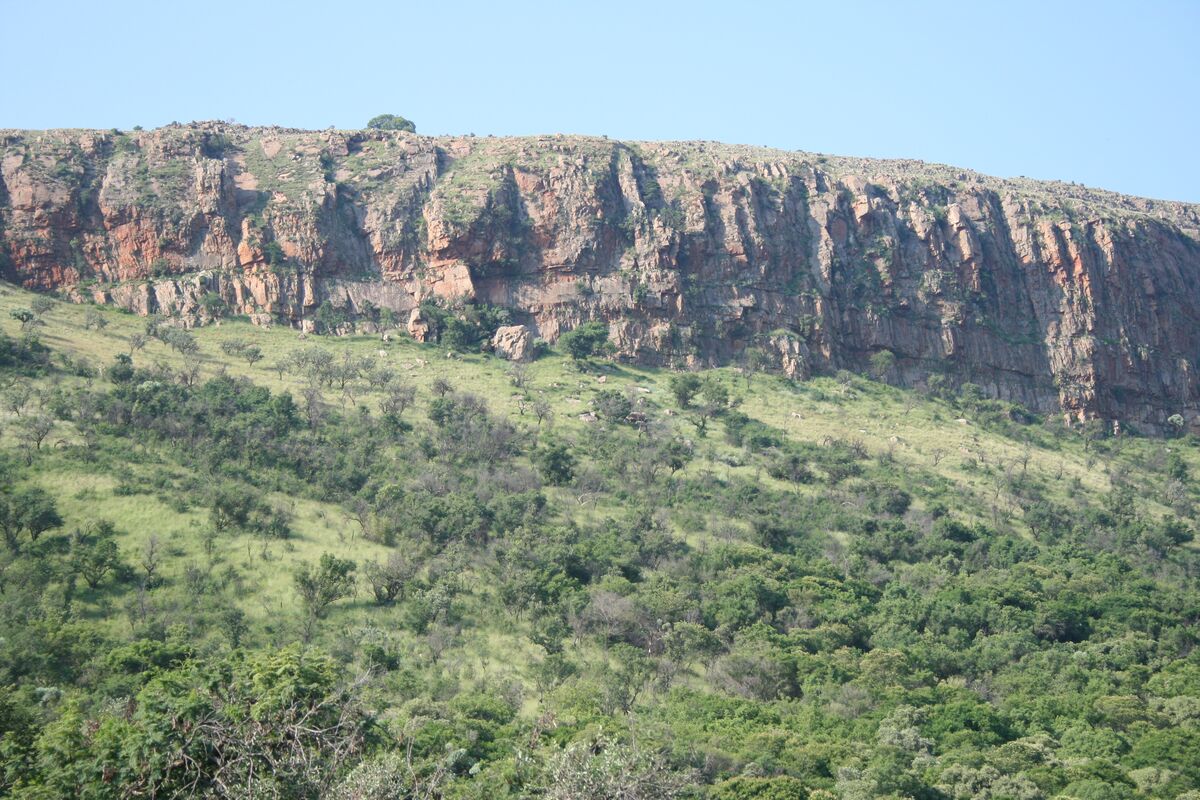
The Magaliesberg cliffs are an ancient wonder
When it comes to the birds, this area is a must-see for anyone nearby. The mixture of grassland and savanna species, as well as water birds living in the areas around the dam, make for plenty of different species that can be sighted. The colossal Skeerpoort cliffs also hide a secret that will surprise any who do not know of their majesty.
While in the region, we stayed at a lodge called Leopard Lodge, situated on the North-West side of the Hartebeespoort dam up the mountains at the base of the Skeerpoort cliffs. The lodge is a 248 hectare private game lodge in pristine condition - giving ample opportunities to explore the birdlife in the area.
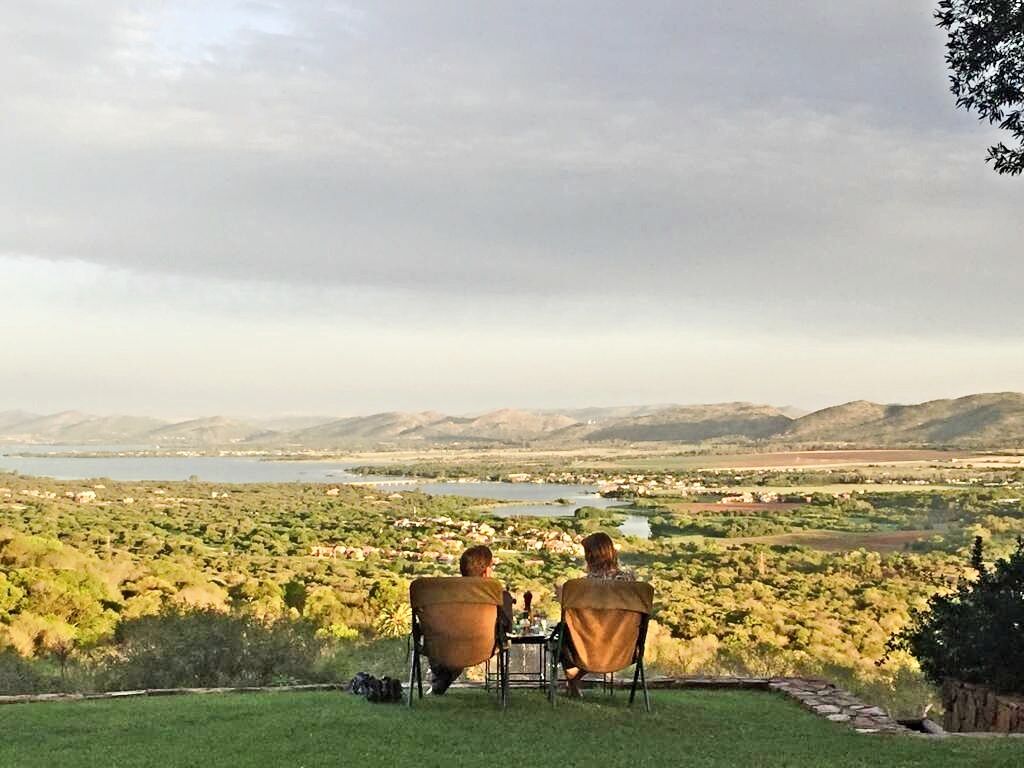
Leopard Lodge
Birding at Leopard Lodge
We arrived at Leopard Lodge in the afternoon and were immediately greeted with a sight I did not expect. High in the sky above the cliffs where Leopard Lodge is nestled, hundreds of raptors circled in the sky. I had to double-check with my binoculars to confirm it, but the skies were absolutely filled with Cape Vultures.
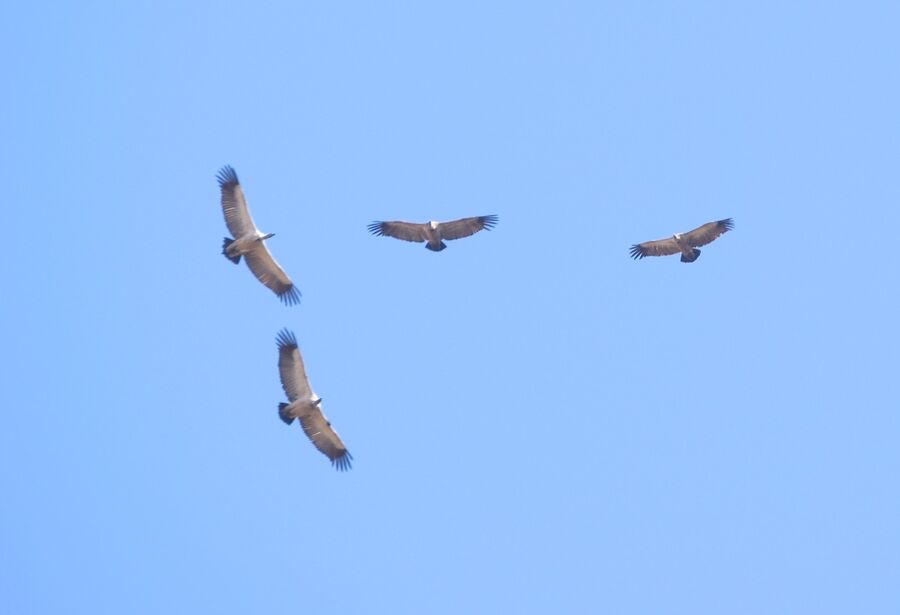
Literally hundreds of Cape Vultures breed and circle around the Skeerpoort cliffs
The plight of South Africa's Vultures is well documented and deeply saddening, so to see the skies filled with them so close to Gauteng metropolitan areas was a sight for sore eyes. Upon doing some research, I found that the Skeerpoort cliffs in the area are the third largest breeding site for the Cape Vulture and Leopard Lodge is situated directly underneath these very cliffs.
Vultures are scavengers and rely on carcasses for their food. With the replacement of indigenous animals with livestock and the lack of predators in all areas other than nature reserves, the vultures at Skeerpoort rely entirely on vulture restaurants. The concept of vulture restaurants was pioneered in the Magaliesberg mountains and number of them can be found in the area, including at the nearby Rhino and Lion Park, where you can visit and watch these magnificent birds do their thing.
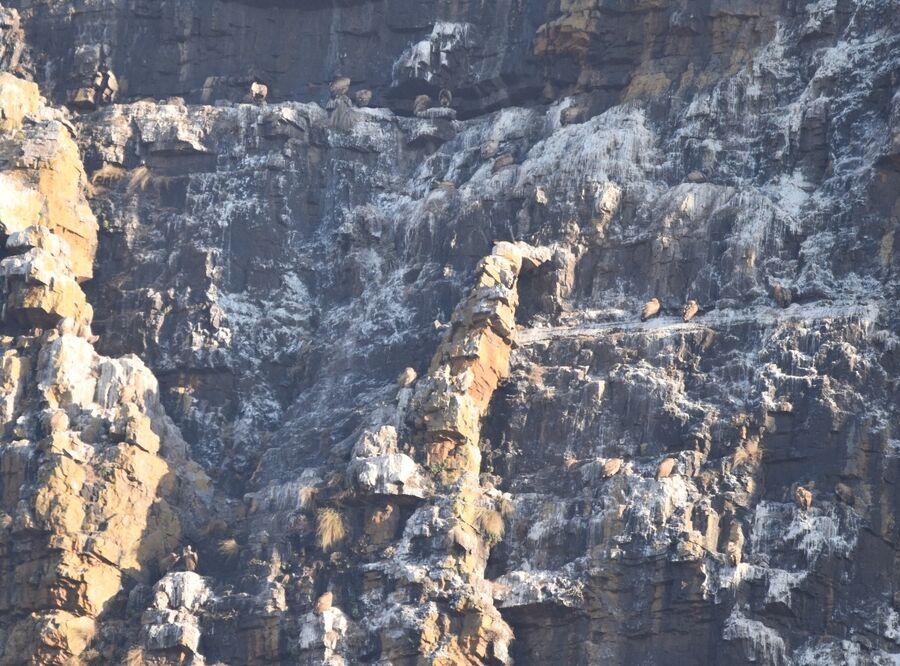
The cliffs above Skeerpoort are painted white with Vulture droppings. If you look closely at this photo you can see multiple vultures roosting on the rocks in the early morning.
After recovering from the shock of seeing so many vultures so close to home, we went to check-in to our room and grab a drink at the outdoor seating around the restaurant. Normally these areas of lodges have a number of resident birds that are fairly tame, but once again I was surprised to see that some of the resident tame birds are a pair of Brown-Hooded Kingfishers that delighted us with their laughing calls and flying across with their magnificent blue feathers. Some of the other resident birds in the main lodge area are the Kurrichane Thrush, Crested Barbet, Jameson's Firefinch and Southern Grey-Headed Sparrow.
The rooms also give excellent birding opportunities. We stayed in one of the Ingwe rooms, which serves as a private bird-hide with a magnificent view of the surrounding tree-tops, the Hartebeespoort Dam and the Skeerpoort cliffs - bleached white with decades-thick covering of vulture droppings. From the patio you are likely to see and hear some great bird species including the Arrow-Marked Babbler, Black-Headed Oriole, White-Bellied Sunbird, Dark-Capped Bulbul and Fork-Tailed Drongo.
Any birder will tell you that the early morning provides the best opportunities to see great birds. We went to Leopard Lodge toward the end of Winter, so it was still cold at sunrise, but from our bed we could hear the beautiful melodic songs of the Cape Robin-Chat and Red-Winged starlings chatting away. The babblers we saw the afternoon before also started their babbling at first light, and were soon joined by the equally noisy Green Woodhoopoes chattering in their unique way. The Grey Go-Away Birds called their familiar call. Although it was still cold, we couldn't resist anymore and had to get out of bed.
Leopard Lodge also features a 5km circular hiking trail through their property. This allows us birders to get out of the main lodge areas and explore deeper into the wilderness. The hike itself is excellent and goes past a number of watering holes (mostly empty at the end of winter) which are full of Southern-Masked Weavers, Red-Billed Queleas and White-Winged Widowbirds.
During the hike we were fortunate enough to hear the distinctive calls of the Emerald-Spotted Wood Dove singing away while the Southern Boubous sang their duets. Grey Hornbills flew regularly around us and the hike finishes in a forested area near the base of the cliffs which let us run into a Grey-Backed Camaroptera, Golden-breasted Bunting and White-Throated Robin-Chat.
But the highlight of the hike, by far, was a pair of accipiters sitting in the trees catching the first light of the morning. Obviously feeling as cold as we were they sat in the sun to warm up while we desperated tried to find a good spot to take a photo. Upon closer inspection, we found these birds to be a male and female Little Sparrowhawk - an excellent sighting which gave a clear illustration of the differences between the male and female versions of this notoriously difficult raptor.

This pair of Little Sparrowhawks were catching the morning sun. This pair is male and female - the female is larger and has yellow eyes, while the male has red eyes during the breeding season and is no larger than a dove!
Leopard Lodge
Leopard Lodge is situated in the Magaliesberg/Hartebeespoort region and is a bit of hidden gem. The lodge caters for larger groups such as weddings and conferences, but is also aimed at smaller families, couples or singles who want to enjoy a natural escape.
Leopard Lodge is a lodge and game farm and is surrounded by greenery and nature. Each room has its own patio and bathroom - 2 rooms even have private outdoor spa baths - and the lodge has a swimming pool and restaurant with a bar. The restaurant is superb and well priced - the breakfast being a highlight for us.
The rooms at Leopard Lodge are top-notch and leave little to be desired. Despite their low cost, they are fully fitted with beautiful finishes, water, electricity and a private patio. We stayed in an Ingwe room, which are suitable for 2 people and offer the best views we could find.
But other rooms are available for larger groups: The Motswedi Cottage is a 4 sleeper self-catering unit situated in front of a watering hole - thus offering great birding, or the larger Khaya House which sleeps 14 and is suitable for larger groups, weddings or conferences.
Bird List
Leopard Lodge is a remarkable lodge situated between the Highveld grasslands, Northern savanna, Magaliesberg cliffs and Hartebeespoort dam. As such, it offers a unique birding experience with the potential of seeing over 100 birds in a summer single day. According to the South African Bird Atlas Project, over 250 unique bird species have been sighted in the area. Take along our bird list to keep track of what you can find... How many can you tick off?

- Leopard Lodge Bird List
- Raptors
- Buzzard, Common
- Eagle, African Fish
- Eagle, Verreaux's
- Eagle-Owl, Spotted
- Falcon, Amur
- Goshawk, Gabar
- Harrier-Hawk, African
- Kite, Black-winged
- Kite, Yellow-billed
- Owl, African Scops
- Owl, Western Barn
- Sparrowhawk, Little
- Vulture, Cape
- Our Common Friends
- Apalis, Bar-throated
- Babbler, Arrow-marked
- Barbet, Black-collared
- Barbet, Crested
- Bee-eater, White-fronted
- Bishop, Southern Red
- Boubou, Southern
- Bulbul, Dark-capped
- Canary, Yellow-fronted
- Cisticola, Zitting
- Coot, Red-knobbed
- Cormorant, Reed
- Cormorant, White-breasted
- Coucal, Burchell's
- Crow, Pied
- Cuckoo, Diederik
- Cuckoo, Red-chested
- Darter, African
- Dove, Laughing
- Dove, Red-eyed
- Dove, Ring-necked
- Dove, Emerald-spotted Wood
- Drongo, Fork-tailed
- Duck, White-faced Whistling
- Duck, Yellow-billed
- Egret, Great
- Egret, Little
- Egret, Western Cattle
- Fiscal, Southern
- Flycatcher, African Paradise
- Francolin, Crested
- Go-away-bird, Grey
- Goose, Egyptian
- Grebe, Little
- Guineafowl, Helmeted
- Gull, Grey-headed
- Heron, Black-headed
- Heron, Grey
- Heron, Striated
- Hoopoe, African
- Hoopoe, Green Wood
- Hornbill, African Grey
- Ibis, African Sacred
- Ibis, Hadada
- Kingfisher, Brown-hooded
- Kingfisher, Pied
- Kingfisher, Woodland
- Lapwing, African Wattled
- Lapwing, Blacksmith
- Lapwing, Crowned
- Lark, Rufous-naped
- Moorhen, Common
- Mousebird, Red-faced
- Mousebird, Speckled
- Myna, Common
- Neddicky, Neddicky
- Pigeon, Speckled
- Pipit, African
- Prinia, Tawny-flanked
- Puffback, Black-backed
- Robin-Chat, Cape
- Sparrow, Cape
- Sparrow, Southern Grey-headed
- Sparrow-Weaver, White-browed
- Spurfowl, Swainson's
- Starling, Cape
- Starling, Red-winged
- Sunbird, Amethyst
- Sunbird, White-bellied
- Swallow, Barn
- Swallow, Greater Striped
- Swallow, Lesser Striped
- Swallow, White-throated
- Swift, African Palm
- Swift, Little
- Swift, White-rumped
- Thick-knee, Spotted
- Thrush, Groundscraper
- Thrush, Karoo
- Thrush, Kurrichane
- Tinkerbird, Yellow-fronted
- Wagtail, Cape
- Warbler, Lesser Swamp
- Waxbill, Blue
- Weaver, Southern Masked
- Weaver, Thick-billed
- White-eye, Cape
- Widowbird, White-winged
- Others
- __________________________
- __________________________
- __________________________
- __________________________
- __________________________
- __________________________
- __________________________
- __________________________
- __________________________
- __________________________
- __________________________
- __________________________
- __________________________
- __________________________
- __________________________
- __________________________
- __________________________
- __________________________
- __________________________
- __________________________
- __________________________
- __________________________
- __________________________
